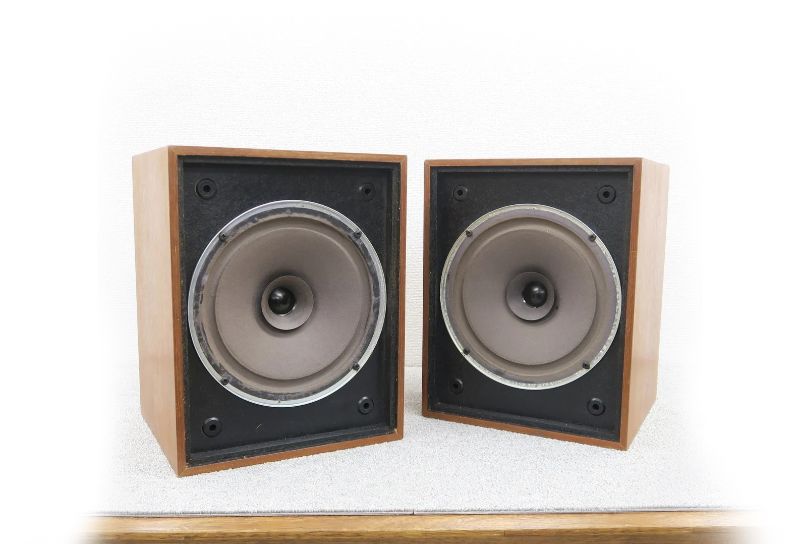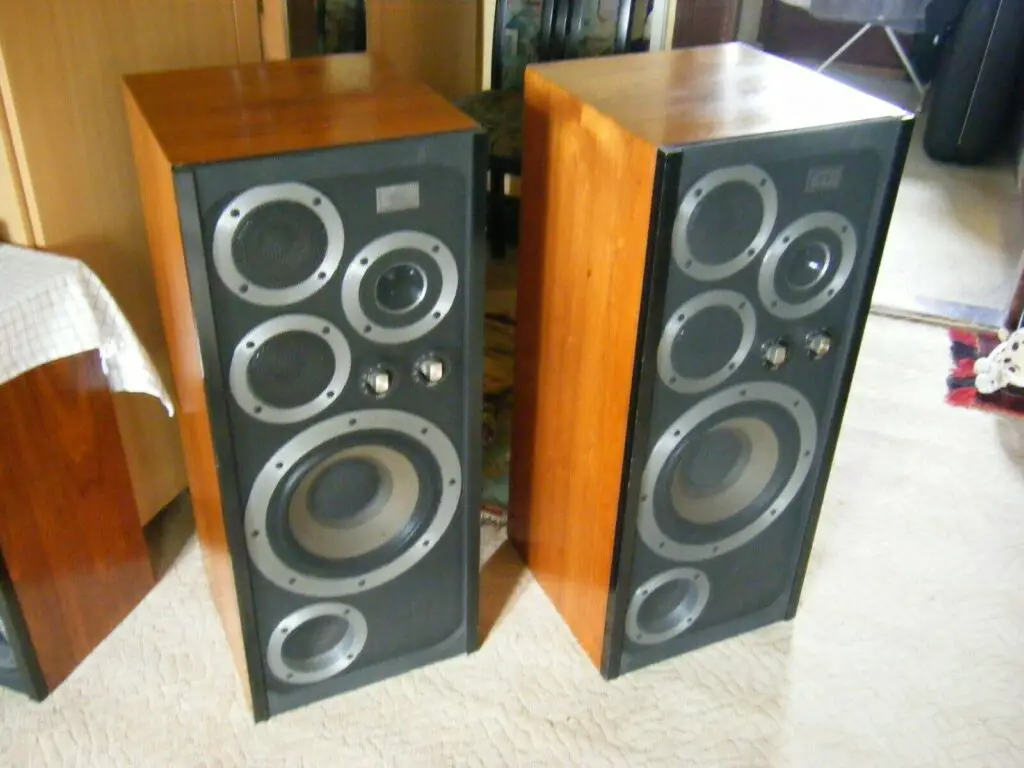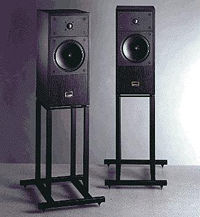Back in 1977, Realistic described their Minimus-7 ‘Metal Cabinet Speaker System’ as “little simply in size, not in performance.” It’s still astonishingly capable and relevant in 2021, given how few micro speakers have been released in the last forty-five years or so.
There’s not much to it — a simple 100mm ‘high compliance woofer’ – or, to be more precise, a mid/bass driver – and a 25mm plastic dome tweeter. In the speaker’s diecast aluminium cabinet, which is a truly beautiful and robust piece of craftsmanship, these are arranged as closely as possible. Despite its small size, the speaker weighs 2.03kg, which isn’t bad for something that measures only 180x113x110mm (HxWxD).
This small loudspeaker was made in Japan for Realistic, a brand of the Tandy Corporation based in the United States, and the quality is clear. It’s a pretty well-made device that would pass today’s standards – the removable metal grille doesn’t ring, and the rest of the cabinet is robust and well-damped.
The manufacturer claimed a frequency response of 50Hz to 20kHz. My ears tell me that the former is far too optimistic; did they measure at -9dB? Because you can only hear the top notes on a bass guitar, I’d assume its bass response is closer to 200Hz at -3dB. A power handling figure of 40 watts (music power) was claimed, again equating to around 20W RMS. At 8 ohms, the impedance is shockingly high for such a little speaker. Because of its minuscule internal volume and lack of reflex-loading, I’d estimate sensitivity to be around 82dB, which is vanishingly low.
This is a real bookshelf speaker, designed to sit on a – you guessed it – bookshelf, flush with the front of it, according to the maker. The Minimus-7 is easy to position thanks to its infinite baffle design, and it performs well in many areas where you’d never think to put a traditional ‘standmount’ speaker. By way of comparison, it makes a Klipsch La Scala appear like a Wharfedale Diamond!
It is what it is acoustically. There’s no denying that you’re listening to a tiny, bandwidth-limited transducer, and the drive units aren’t particularly polished. It does, however, have strengths, and they are formidable. The first is its incredible transient speed – this tiny loudspeaker is lightning fast. Rather of lamenting any particular lack of bass extension, you find yourself paying close attention to the music’s rhythms and appreciating them.
This speaker’s second skill is soundstaging; it’s essentially a point source, so it blends into any recorded acoustic it’s requested to reproduce. It has a great ‘out of the box’ vibe to it, making it sound much larger than it is. It also has a great sense of depth, so it’s not simply notable for its left-to-right prowess.
There are a few drawbacks: the tone isn’t particularly sweet, and the treble might be a little harsh. As a result, it functions better with higher-end ancillaries, which is ironic. Regardless matter the sort of music played, the overall outcome is a pleasurable listen. Given that a pair of Minimus-7s can be had for £50 or less on eBay, there’s a lot to admire about this vintage micro monitor that produces huge sound in a little space – exactly as its manufacturer stated all those years ago…








